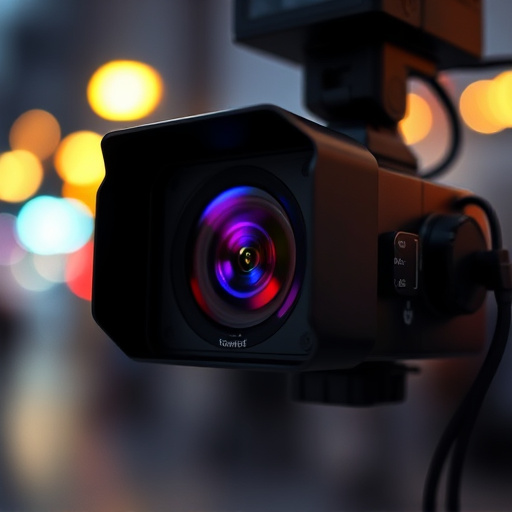Battery-operated hidden childcare cameras provide discreet monitoring for parental peace of mind, blending into everyday objects with long-lasting batteries. Detection requires RF sweeping and visual inspections, focusing on high-access areas. Legal and ethical considerations include understanding privacy laws and respecting individuals' expectations, with transparent communication and proportional device use crucial. Age-appropriate features and clear rules balance surveillance with privacy, fostering safety and trust.
Hidden monitoring devices, particularly battery-operated childcare cameras, have become a topic of heightened concern for parents. With their discreet nature, these cameras can offer peace of mind but also raise significant privacy and ethical issues. This article delves into understanding the technology behind these devices, exploring effective signal detection techniques. We also navigate legal complexities, emphasize safety measures, and provide insights to help parents make informed decisions while ensuring children’s privacy is protected.
- Understanding Battery-Operated Hidden Cameras: A Parent's Perspective
- Detecting Signal: Techniques to Uncover Discreet Devices
- Legal and Ethical Considerations: Navigating the Complexities
- Safety Measures: Protecting Children While Avoiding Privacy Intrusion
Understanding Battery-Operated Hidden Cameras: A Parent's Perspective
Hidden cameras, especially those powered by batteries, are a common concern for parents looking to ensure their child’s safety while in childcare settings. Battery-operated hidden childcare cameras can be inconspicuously placed in various areas of a room, offering peace of mind and real-time monitoring. Understanding how these devices work is the first step for parents to make informed decisions.
These cameras often utilize long-lasting batteries, allowing them to operate discreetly without drawing attention. They are designed with small, compact bodies, making them easy to hide in everyday objects like toys, books, or even wall sockets. From a parent’s perspective, this technology provides an additional layer of security, ensuring they can keep an eye on their child’s activities, especially in situations where direct supervision may be challenging.
Detecting Signal: Techniques to Uncover Discreet Devices
Detecting hidden monitoring devices, such as battery-operated childcare cameras, requires a blend of technical know-how and keen observation. Start by performing a thorough sweep of the area using specialized equipment like RF (radio frequency) detectors. These tools can pick up signals from various devices, helping you identify potential hidden cameras. Walk through each space, checking for any unusual electronic interference or faint signals that might indicate the presence of a covert camera.
Visual inspection is another powerful technique. Look for subtle signs like small holes where cables might have been drilled, or unusual markings on walls or ceilings that could suggest the installation of a hidden device. Remember, these cameras are designed to be discreet, so they often blend into their surroundings. Pay close attention to areas frequently accessed by children or staff, as these spots are more likely to host such devices.
Legal and Ethical Considerations: Navigating the Complexities
When employing Battery Operated Hidden Childcare Cameras or any monitoring device, it’s paramount to understand the legal and ethical boundaries that surround their use. In many jurisdictions, surveillance cameras in private settings, especially those involving children, are subject to strict regulations. Parents or caregivers must ensure they’re adhering to local laws regarding privacy rights and informed consent. Ethical considerations also come into play; while monitoring can be a necessary tool for safety, it should not infringe upon an individual’s reasonable expectation of privacy.
Navigating these complexities involves clear communication with all parties involved, especially children, and ensuring that the use of hidden cameras is transparent, proportional to the risk, and in line with established legal guidelines. Regular reviews of both the device placement and data handling procedures are essential to maintain compliance and uphold ethical standards.
Safety Measures: Protecting Children While Avoiding Privacy Intrusion
When using hidden monitoring devices, such as battery-operated childcare cameras, it’s crucial to balance safety measures with respect for privacy. Installing these cameras in homes or care settings can provide peace of mind, especially for parents who want to keep an eye on their children’s activities while they’re away. However, it’s essential to ensure that the placement and use of these devices do not invade the privacy of the individuals captured in the footage.
To protect children while avoiding privacy intrusion, consider using cameras that are designed with age-appropriate features and restrictions. Many battery-operated hidden childcare cameras now come with remote activation, time-limited recording, and motion detection capabilities that can be adjusted to respect personal space and privacy needs. Additionally, setting clear rules about the use of these devices and ensuring open communication between parents, caregivers, and children can foster an environment where safety and trust coexist harmoniously.
In conclusion, while Battery Operated Hidden Childcare Cameras can offer valuable peace of mind for parents, their use necessitates a careful balance between safety and privacy. By understanding how these devices operate, mastering detection techniques, and adhering to legal guidelines, parents can ensure their children’s well-being without infringing on personal space. Staying informed and proactive is key in navigating this evolving landscape of technology and parental oversight.
